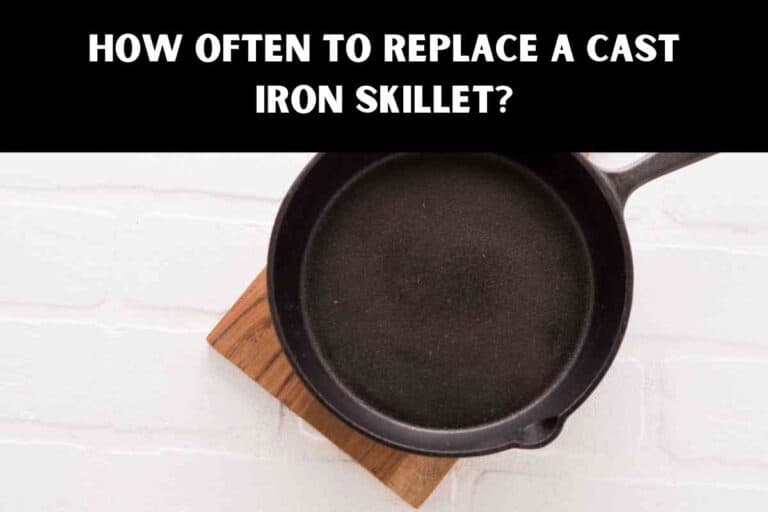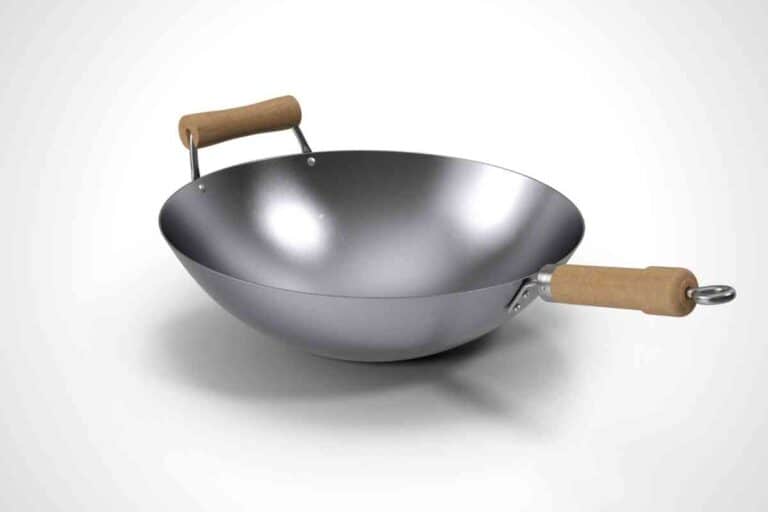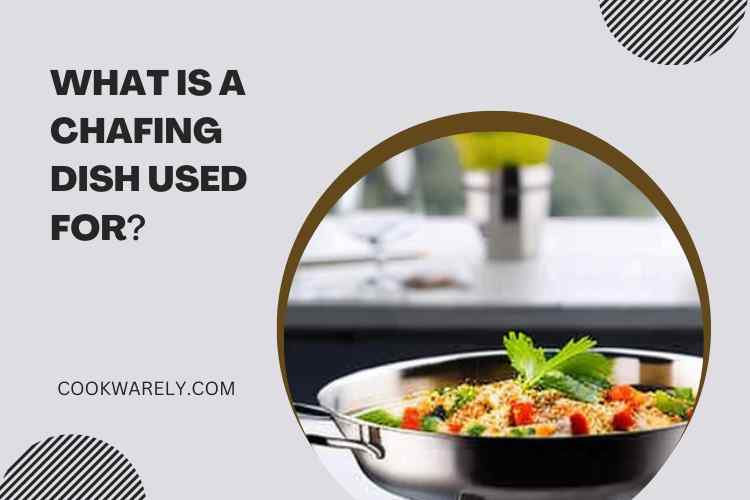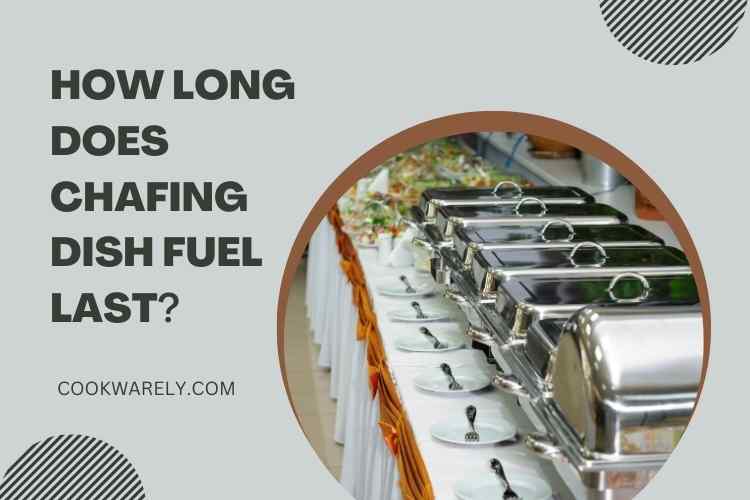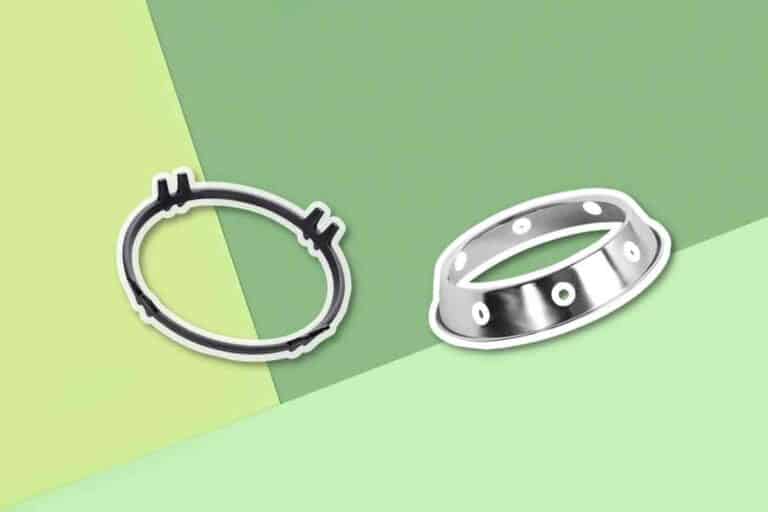Do Carbon Steel Wok Black Residue?
Yes, carbon steel wok black residue is a common phenomenon that occurs when the wok is seasoned or used for cooking. The black residue is the result of oil polymerization, which is a chemical reaction that creates a protective layer on the surface of the wok.
This layer helps to prevent rust, corrosion, and sticking and also enhances the flavor of the food cooked in the wok. The black residue is not harmful, but it can flake off if the wok is not properly seasoned, cleaned, or maintained. To fix a flaking wok, you need to remove the old seasoning and re-season the wok with a thin layer of oil.
Moreover, carbon steel woks turn black over time due to rusting and sometimes due to carbon steel black residue, It is not recommended that you use carbon steel woks because they get rusty. Instead, it would be best if you used stainless steel woks which are non-corrosive.
Also, check out our detailed review of the best wok for deep frying.
Contents
A Quick Summary: Do carbon steel woks turn black
| Feature | Description |
|---|---|
| Material | Carbon steel woks are typically made from thin sheets of carbon steel, known for their excellent heat retention and distribution. |
| Seasoning | Carbon steel woks can be seasoned, a process that involves applying oil and heating to develop a natural non-stick coating. |
| Blackening | Carbon steel woks can turn black as part of the seasoning process, which creates a protective layer on the cooking surface. |
| Patina Formation | The blackening of the wok indicates the formation of a patina, which prevents rust, enhances non-stick properties, and adds character. |
| Safe for Cooking | Blackened woks are safe to use; the blackening doesn’t affect food quality or safety, making them suitable for various dishes. |
| High Heat Tolerance | Carbon steel woks can withstand high temperatures, making them ideal for stir-frying and other high-heat cooking methods. |
| Chemical Reactions | Some chemical reactions with food may contribute to blackening, but this is a natural part of the wok’s seasoning process. |
| Benefits of Blackening | A blackened wok offers benefits like improved non-stick properties, enhanced flavor, increased durability, and an appealing appearance. |
| Care and Maintenance | Proper care includes seasoning, avoiding harsh cleaning chemicals, and regularly removing debris from the wok’s interior surface. |
| Longevity | Blackening actually extends the wok’s longevity by providing protection against rust and corrosion, ensuring long-term use. |
Key Takeaways
- Blackening of carbon steel woks is a natural and expected part of their seasoning process.
- The blackening indicates the formation of a protective patina that enhances durability and non-stick properties.
- Blackened woks are safe for cooking; the blackening doesn’t affect food safety.
- Blackened woks offer improved cooking performance and longevity when properly maintained.
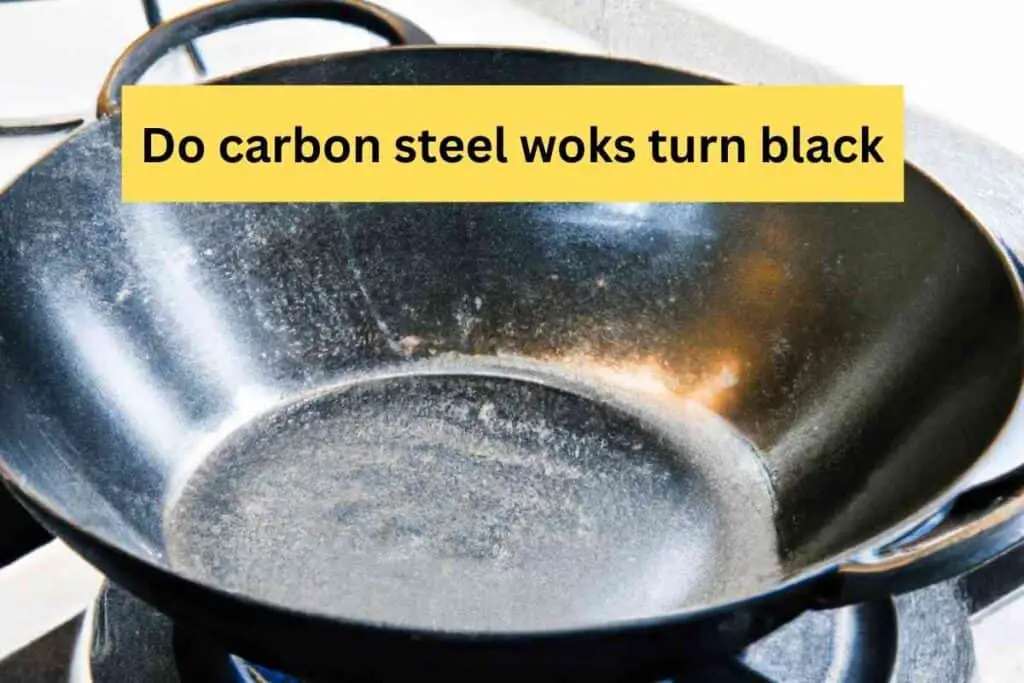
Facts About Carbon Steel Woks Turn Black
- Carbon steel woks are intentionally heated and oiled as part of a seasoning process, which causes them to turn black over time.
- The blackening of the wok signifies the development of a natural, non-toxic patina. This patina acts as a protective layer, preventing rust and corrosion.
- As the wok turns black, its non-stick properties improve, making it easier to cook with and clean.
- Blackened carbon steel woks are safe to use. The blackening doesn’t compromise food quality or safety.
- Carbon steel woks can withstand high temperatures, making them ideal for high-heat cooking methods like stir-frying.
- While chemical reactions with certain foods can contribute to blackening, this is a natural part of the wok’s seasoning and doesn’t harm the wok or food.
- Blackened woks have increased durability, lasting for years when properly cared for. They also enhance the flavor of dishes and add an attractive aesthetic to the kitchen.
Do Carbon Steel Woks Turn Black?
Carbon steel woks will turn black with use because the steel reacts with oxygen in the air to form a black oxide layer on the wok’s surface.
This is perfectly normal and not harmful. In fact, many people prefer to season their woks to create this black oxide layer, as it helps the wok to develop a non-stick surface.
Does carbon steel wok black residue?
When you have a carbon steel wok, you may notice some black residue on it after a few uses. This is caused by the oxidization of the carbon steel.
To remove this residue, you can either use baking soda or salt. If you’re dealing with an old wok, you may need to scrub it with an abrasive cleaner.
If you do not like the look of this black residue on a carbon steel pan, you can scrub it with lemon juice, white vinegar, or coarse salt. Just make sure to rinse the wok thoroughly after cleaning it.
Try Herda Scrubber for Carbon Steel.
Afterward, you can use a metal scrubber or carbon steel soap to clean the wok thoroughly. It is also a good idea to thoroughly dry it after washing it.
This is because harsh cleaners may leave traces behind and eventually cause rust. Abrasive cleaners can also scratch the wok’s surface and damage the finish.
What is the black coating on wok?
The black coating on wok is the result of seasoning, which is a process of applying oil to the surface of the wok and heating it until it forms a protective layer.
Seasoning helps to prevent rust, corrosion, and sticking and also enhances the flavor of the food cooked in the wok.
The black coating is not harmful, but it can flake off if the wok is not properly seasoned, cleaned, or maintained. To fix a flaking wok, you need to remove the old seasoning and re-season the wok with a thin layer of oil.
What’s causing the carbon steel wok to turn black?
The carbon steel wok turns black because of the seasoning process, which is the same as the black coating I mentioned in my previous answer.
Seasoning is a way of creating a non-stick and rust-resistant surface on the wok by applying oil and heat. The oil reacts with the metal and forms a polymerized layer that is black in color. This layer protects the wok from oxidation and gives it a smooth and glossy appearance.
The more you use and season your wok, the darker and more non-stick it will become. However, if you do not season your wok properly or regularly, the black layer may peel off or become uneven.
How to get the black off my wok?
If your carbon steel wok has developed a black film on its surface, you can follow these tips to get rid of it. First, you need to clean it thoroughly. You should do so using a non-abrasive cleanser, preferably water.
After this, you need to apply a thin layer of oil on the entire surface of the wok. Let this dry for a few minutes. Finally, you can use a soft brush or scrubber to scrub off any remaining seasoning.

Try Weiman Stainless Steel Cleaner Kit.
Conclusion
The black residue commonly found on carbon steel woks is a natural byproduct of the seasoning process, where oil polymerizes to form a protective layer on the wok’s surface.
This layer not only prevents rust and corrosion but also enhances the flavors of the dishes prepared in the wok. While the black residue is generally harmless, it may flake off if the wok is not adequately seasoned or maintained.
If flaking occurs, the remedy involves removing the old seasoning and re-seasoning the wok with a thin layer of oil.

